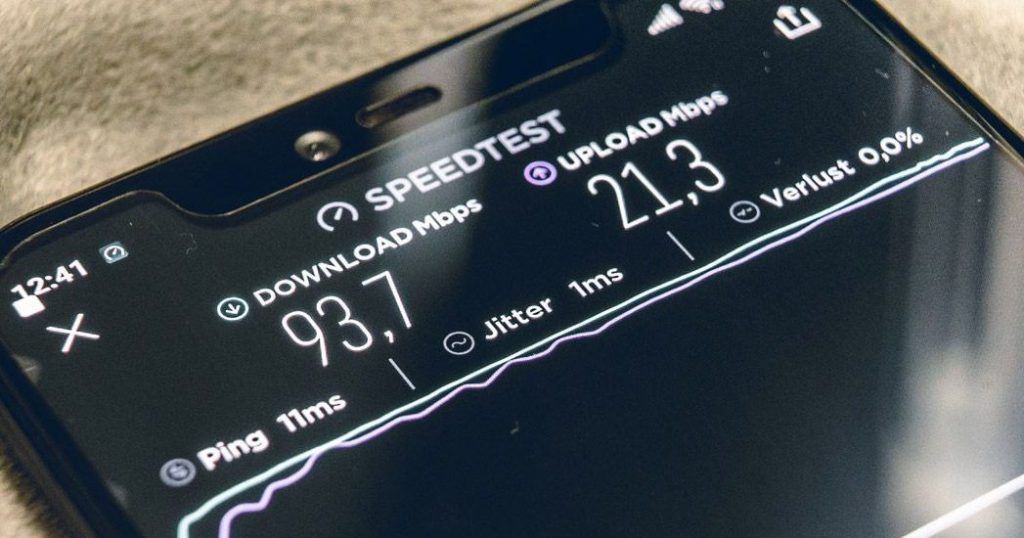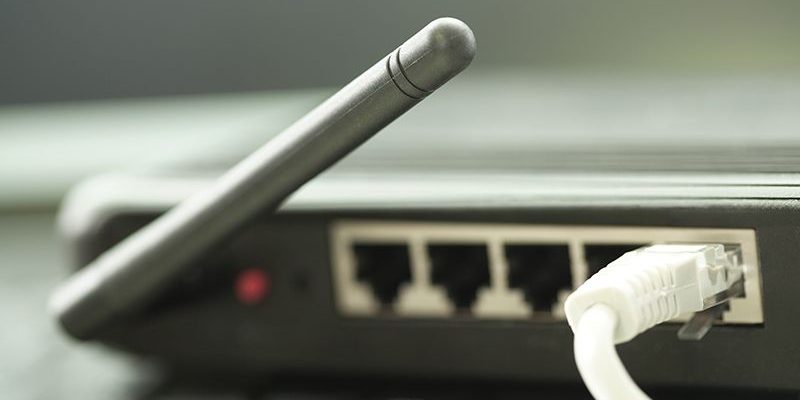Broadband Jargon: A-Z of Internet Speak
9th January, 2023 | Home / Blog / Understanding broadband / Broadband Jargon: A-Z of Internet SpeakReading time: 9 minutes

Jargon here, jargon there, jargon everywhere. But what does it all mean? There’s no need to ponder any longer as we’ve bundled together the A-Z of broadband terms to help make life simpler for you online. Now you can get clued up knowing your WiFi from your fibre, Gigabytes from your Megabytes, uploads from your downloads and everything else in between. We’ve made it as easy as ABC, literally!
A is for…
ADSL
Asymmetric Digital Subscriber Line (ADSL) is a broadband connection that uses copper telephone lines to transfer data. It provides a faster connection than traditional dial-up, but the use of ADSL is decreasing now people are switching to much faster fibre technology.
B is for…
Broadband
Broadband is an umbrella term for several high-speed communication technologies, including ADSL, cable, fibre, wireless and satellite. It loosely means internet access that is always on, and faster than traditional dial-up internet access.
Bandwidth
Bandwidth refers to the maximum capacity of a network or internet connection. Typically, you’ll see bandwidth displayed in Bits per second (Bps).
Backhaul
In telecommunications, a backhaul often refers to the aspect of the network that connects to the global internet, through the internet exchange point or access location.
C is for…
Contended Connection
A contended connection suggests the service is shared by others. You should receive the upload and download speeds advertised, provided no other users are using the service at the same time.
Capping
In the broadband world, capping is a term often used to refer to data limits. Should you exceed the capping limits, you may be required to pay an excess charge, and your speeds can be throttled. Airband does not use data capping.
D is for…
Download Speed
Download speeds refer to how quickly your connection will download information from the internet. It’s simple – the larger the download speed, the quicker it will be to access everything online. Airband offers download speeds up to 900Mbps.

Dial-up Internet
Ever remember traditional dial-up internet? This allowed internet connectivity using a standard telephone line. Through connecting the telephone line to a modem and configuring your computer to dial a specific number provided by your ISP – you’re able to access the internet (albeit, nowhere near as quickly as we’re used to these days!).
E is for…
Ethernet
Ethernet is a hardwired method of linking computers together in a local area network (LAN). You can connect directly to your router via an ethernet cable rather than using WiFi if you want better performance for intensive tasks like gaming and HD streaming.
F is for…
Fibre-to-the-premises/Fibre-to-the-home (FTTP)
FTTP (fibre to the premises) and FTTH do exactly what they suggest– they provide fibre broadband directly to your doorstep.
This faster technology has waved goodbye to the use of standard copper cables and introduced fibre optic cables to provide high-speed broadband that won’t slow you down online.
Head over to our broadband coverage checker and see if you’re in range for ultrafast fibre speeds up to 900Mbps!
Fibre-to-the-Cabinet (FTTC)
Fibre to the Cabinet (FTTC) uses a duo of cables to deliver faster broadband speeds. Fibre optic cables are used to connect the cabinet to the exchange, and the connection from the cabinet to your premise is delivered through copper. Although it’s not as quick a service as FTTP, the part fibre connection still offers you faster speeds than traditional copper broadband.
Fixed Line
Think the opposite of wireless. A fixed line is an internet connection that is delivered over a physical link, such as ADSL or fibre.
Fair usage policy
Fair usage policy means exactly that – ensuring the usage is fair for all end users. ISPs can limit the connection of regular excessively heavy internet users who impact the connection for others regularly.
G is for…
Gigabytes (GB)
GB is short for gigabytes, and it’s used to describe the size of computer files and memory capacity.
There are 1000 bytes in a kilobyte (KB), 1000 kilobytes in a megabyte (MB), and 1000 megabytes in a gigabyte (GB). You may find large music files, games or high-quality films could be measured in either megabytes or gigabytes, whereas a small text file will be measured in bytes or kilobytes. So, the bigger the file, the bigger the byte!
Gigabit (Gb/Gbps)
Not to be confused with gigabytes (GB), Gb is short for Gigabit – used to describe the transfer speed of your data. 1 gigabyte is equal to 8 Gigabits. You’ll most likely see this written as Gbps (Gigabits per second) when referring to internet speeds.
H is for…
Hotspot
We’re not talking about your favourite place to sit outside. Devices connected to the internet can also be used as a hotspot. This method allows other devices to connect to the internet through your phone, computer, or laptop over WiFi. Sharing is caring!
I is for…
ISP
ISP stands for internet service provider (like Airband!). ISPs are responsible for providing your internet connection, whether that’s through their infrastructure or utilising the existing.
Internet
Many of us use the internet every day without thinking much about it. Imagine the internet as being a huge network which allows people to send data from device to device, across the world. Impressive when you think about it, right?
J is for…
Jargon
Broadband jargon is terminology to describe everything and anything that relates to your broadband connection. It can sometimes be confusing, so we’ve made this easy guide to help you out.
K is for…
Kilobits (Kb/Kbps)
Kilobits per second (Kbps) is not so common these days, but it was often used to measure slower internet connections like dial-up internet.
Kilobyte (KB)
Don’t get caught out between your Kilobits and Kilobytes. Kilobytes measure the storage capacity and size rather than kilobits which measure the transmission speeds.
L is for…
Latency
Latency is the amount of time it takes for a packet of data to cross a network and get a response. The higher the latency, the longer the time it takes to send data. Latency is an issue typically associated with satellite broadband.
M is for…
Megabit (Mb/Mbps)
Mb is short for megabit, which is generally used to describe data transmission speeds. When referring to the speed of a broadband connection, you’ll most likely see this as Megabits per second (Mbps).
Megabyte (MB)
Megabytes (MB) are used to measure the size of storage capacity and files.
Modem
A modem is often confused with a router. The modem is what is used to connect you to the network, and the router is designed to connect multiple devices within your home. Without a modem, you’ll not be able to access a connection and without a router, you won’t be able to connect multiple devices.
N is for…
Network
A network refers to two or more computers connected to share data (such as your files and electronic communications) as well as sharing resources like a printer. Depending on your connection, the computers on a network may be linked together through radio waves, cables, satellites, or telephone lines. The two common types of networks you’ll often hear are Local Area Network (LAN) and Wide Area Network (WAN).
O is for…
Ofcom
Ofcom, short for Office of Communications is UK’s communications regulator. They control and improve services that we regularly rely on in day-to-day life, such as our broadband, TV, radio, home phones and mobile services.
Online
If your device is connected to the internet or a network, that means you’re online. Many devices can be used to go online, such as laptops, computers, mobile phones, tablets, smartwatches and game consoles. The term online can also refer to services you can access online, such as online banking, online government services and NHS online services.
P is for…
Point-to-Point Protocol over Ethernet
Otherwise referred to as PPPoE. Yep, we know, it’s a whole lot of characters! Simply put, it’s a username and a password which is input into a router to allow authentication onto a network.
Q is for…
Quality of Service (QoS)
QoS improves the quality of the network, by managing data traffic to reduce packet loss, latency or jitter on a network.
R is for…
Router
Also known as a hub, a router to connects multiple devices in your home or business to each other and the internet.

S is for…
Superfast
Superfast refers to the speeds you’ll receive with a superfast broadband connection. Ofcom defines superfast broadband as a service which provides a minimum download speed of at least 30Mbps. Airband offers speeds up to 900Mbps.
Satellite broadband
Satellite broadband works by sending data from your devices to a dish that’s connected to your property. The satellite dish sends a signal to a satellite in orbit above the Earth. Due to the distance the signal must travel, latency issues are common with satellite broadband.
(It’s a perfect time to mention that Fixed Wireless broadband is coincidentally one of the fantastic options Airband offer too?). Although satellite equipment tends to be an expensive option, it can be a practical option for those living in rural areas who can’t access other internet options like DSL, fixed wireless, cable, or fibre.
Speed
You’ll hear the mention of speeds everywhere when it comes to broadband. Speed refers to the transfer rate of a broadband connection, which is usually measured in either Kbps, Mbps or Gbps.
Still stumped? Check out our breakdown of broadband speeds explained to find out more.
Streaming
Whether you’re watching your favourite shows on Netflix, finding out hacks on YouTube, or listening to your all-time favourite track on Spotify – you’re a streamer! With streaming, there’s no need for any downloading – just click play and you’re away. But there may be one downside… the dreaded buffering wheel. To watch, listen or play without interruptions online, your speeds must be up to shape!

T is for…
Traffic Management
Traffic management refers to broadband providers prioritising certain kinds of online activity at peak times of the day. Airband does not do this, so you don’t need to worry about a slowdown of speeds, no matter what time of day you’re online.
U is for…
Ultrafast
Ultrafast refers to the speeds provided with your connection. Ultrafast refers to the speeds provided with your connection and generally means speeds over 300Mbps.
At Airband, you’ll most commonly see this referring to our ultrafast fibre broadband packages, offering ultimate speeds up to 9ooMbps. They’re perfect for those wanting a life online without limits! We also offer superfast packages too – check our coverage to see if you’re in range.
Upload Speed
This is the speed information is transferred from your computer to the Internet. The faster the upload speed, the quicker you can send emails, post pictures or upload videos! Typically, upload speeds are slower than download speeds as people generally do far more downloading than uploading, so downloading is given priority.
Although, if you’re a business it’s recommended you consider how much upload capacity you need. Take a look at our business broadband packages to see how we can help you.
V is for…
VoIP
Voice over Internet Protocol (VoIP) is a nifty bit of technology which allows you to make phone calls through your internet connection.
Our VoIP offering, Airband Talk is available from just £4/month.
W is for…
Wireless
Fixed wireless offers high-speed internet access, using radio signals instead of cables to connect you to the internet. At Airband, we offer both fixed wireless and fibre broadband solutions.
Wi-Fi
A type of technology allowing computers, smartphones, or other devices to connect to the internet or communicate with one another wirelessly within a particular area.
X is for…
Fibre to the “X”
The X refers to the type of fibre connection you’ll get from the exchange to your premises, whether it’s fibre-to-the-premises or fibre-to-the-cabinet.
Y is for…
Y2K
Y2K was a challenge faced by digital files at the turn of the millennium. Some systems referred to years using the last two digits, meaning 2000 would read the same as 1900. People spent lots of money on shoring up their systems against the bug. But, when the clock chimed 12 on December 31st, 1999, it turned out that “the millennium bug” didn’t do much at all and life carried on as normal.
Z is for…
Zip
Zip files can also be referred to as archives. .Zip files are single files which contain multiple compressed files. They make it easier to store and transmit data through email, downloading or file sharing.
Now you’re clued up on the latest lingo, why not get clued up on our unbeatable broadband packages? Simply pop your postcode into our broadband coverage checker to discover whether you’re in range for a better connection.
Alternatively, you might like:
Related Articles
Check availability:


